Fly fishing is more than just a sport; it’s a blend of art, technique, and pure outdoor joy. Whether you’re casting a line into a serene stream or battling a strong fish on a lake, fly fishing offers an unmatched experience. In this proven guide, we’ll walk you through exactly what fly fishing is, the essential gear to get started, techniques for success, and pro tips to make your first (or next) outing unforgettable.
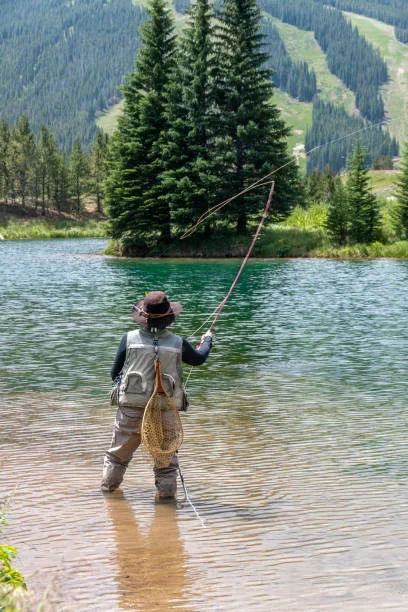
If you’re just beginning, don’t miss our in-depth breakdown on How to Get Started with Fly Fishing: A Beginner’s Toolkit for choosing gear, setting up your rig, and learning your first cast.
What Is Fly Fishing?
Fly fishing is a method of angling where an artificial “fly” is used to catch fish. Unlike traditional fishing that uses bait or lures with weight, fly fishing involves casting a nearly weightless fly using a specialized fly line. The technique focuses on imitating natural food sources like insects, which makes it both challenging and deeply rewarding.
Fly fishing can be done in freshwater or saltwater, targeting species such as trout, salmon, bass, and even tarpon. It’s as much about the experience as it is about the catch. According to the Outdoor Industry Association, over 7 million Americans fly fish each year, and the number is steadily rising. In 2023, the number of fly fishing participants in the United States amounted to 8.1 million. This represented an increase of approximately seven percent over the previous year.
Want to explore where to take your fly rod next? Check out our guide to Top Fly Fishing Destinations in the U.S. for Every Season for insider tips on the best times and waters.

Fly Fishing Rod
A fly fishing rod is designed specifically for casting light flies. These rods are classified by weight (wt), which must match the fly line weight for optimal performance. Here’s a quick overview:
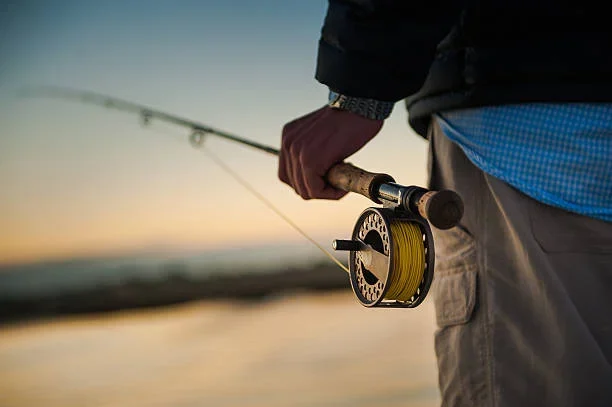
Rod Weight | Target Fish | Water Type |
1-3 wt | Small trout, panfish | Small creeks |
4-6 wt | Trout, bass | Rivers, lakes |
7-9 wt | Pike, steelhead | Large rivers, flats |
10-14 wt | Tarpon, tuna, saltwater game | Ocean, saltwater |
Graphite and fiberglass are the most common materials. For beginners, a 5-wt 9-foot rod is the most versatile option.
🎣 Fly Fishing Reels
A fly fishing reel isn’t just a line holder, it’s a crucial part of your setup that helps manage line control, drag, and balance. Especially when you’re hooked into a powerful trout or a running saltwater fish, the quality of your reel can make or break the fight.

🧩 Why Fly Reels Matter
Unlike spinning reels, fly reels are manually operated and simpler in construction, but they must be finely tuned. The reel must match your rod’s weight class and provide consistent drag pressure for smooth, controlled fish retrieval.
🛠️ Types of Drag Systems
Drag Type | Best For | Pros |
Click-and-Pawl | Small fish (trout, panfish) | Lightweight, simple, classic feel |
Disc Drag | Larger fish (bass, salmon, saltwater) | Powerful, smooth, adjustable |
Disc drag systems often use carbon fiber or ceramic discs and are favored for versatility and performance under tension.
🔄 Reel-to-Rod Matching
To ensure balance and castability, your reel should match your rod’s weight:
- 3–5 wt reels for small streams and trout
- 6–8 wt reels for bass or steelhead
- 9–12 wt reels for saltwater and large game fish
The reel’s arbor size also matters. Large-arbor reels retrieve line faster and reduce memory (line coil), which is ideal for quick fights and smoother line management.
🏆 Recommended Fly Fishing Reels
Here are some top-rated, field-tested options across budgets:
Model | Features | Best For |
Orvis Hydros® Reel | Lightweight, sealed drag system | All-purpose freshwater |
Redington Behemoth | Super-strong drag, budget-friendly | Big fish, freshwater/salt |
Abel Vaya Reel | Hand-painted designs, top-tier performance | Premium experience |
Lamson Liquid Reel | Cast aluminum frame, beginner-friendly | Entry-level, value-focused |
According to Field & Stream, the Hydros reel series consistently ranks in the top 5 for versatility and reliability.
🧵Fly Fishing Line
The fly fishing line is the backbone of your casting system, more important than the fly itself when it comes to performance. Unlike traditional fishing lines, fly lines are thicker and weighted, allowing anglers to cast lightweight flies over long distances with precision.

🔄 Types of Fly Fishing Line
Line Type | Best For | Characteristics |
Floating Line | Dry flies, topwater lures | Stays on the surface, great for beginners |
Sink Tip Line | Streamers in medium-depth water | Tip sinks while the main line floats |
Full Sink Line | Deep water lakes, big river holes | The entire line sinks; good for reaching the bottom |
Intermediate Line | Stillwater and slow retrieves | Sinks slowly; nearly invisible underwater |
Weight Forward | General use and long-distance casting | Heavier front section for better energy transfer |
Tip: Choose a fly line that matches your rod weight, e.g., a 5 wt rod needs a 5 wt line. This balance ensures smoother casts and better control.
🧪 Key Stats:
- Over 70% of anglers use floating weight-forward lines, making them the top choice for beginners and all-around fishing (Orvis Survey, 2022).
- Most modern fly lines are made of PVC or polyurethane coating over braided nylon, providing durability and slickness.
🪢 Fly Fishing Knots
Mastering the right fly fishing knots is critical to landing fish successfully. Whether you’re tying on a fly, connecting tippet to leader, or setting up your reel, a poorly tied knot can cost you a trophy catch.
The strength, ease, and application of each knot matter especially when you’re working with fine tippet and strong fish in fast-moving water.

🔧 Essential Fly Fishing Knots Every Angler Should Know
Knot Name | Purpose | Strength & Use Case |
Improved Clinch Knot | Attaches fly to the tippet | Easy and strong; ideal for most dry flies |
Surgeon’s Knot | Connects tippet to leader | Quick, holds well even with different diameters |
Arbor Knot | Secures backing to reel | Fast and secure; first knot in reel setup |
Loop-to-Loop Knot | Quick connect between the leader and the fly line | Fast gear changes; preserves leader length |
Perfection Loop | Creates a loop at the line/tippet end | Makes fly changes fast without retying the entire rig |
🎣 Why Knots Fail (And How to Prevent It)
- Dry knots before tightening = increased friction = breakage.
- Always moisten the knot with water or saliva before pulling tight.
- Practice on a larger mono line first to perfect your technique before using thin tippet.
📊 Knot Strength Statistics
According to independent tests by Fly Fisherman Magazine:
- Improved Clinch Knot retains ~85% of line strength.
- Surgeon’s Knot retains over 90% when tied correctly.
- Perfection Loop retains about 80–85%, great for quick rigging.
🥅 Fly Fishing Net
A fly fishing net is more than a tool, it’s your last line of defense between a great story and a lost fish. Whether you practice catch-and-release or keep your catch, using the right net helps land fish safely and efficiently without damaging them.

🎯 Why You Need a Net for Fly Fishing
- Protects the fish during handling (especially with barbless hooks)
- Increases landing success, especially in fast current
- Speeds up catch-and-release, reducing fish stress
- Prevents line tangles and broken tippets near shore
According to Trout Unlimited, using rubberized nets can increase survival rates of released fish by over 40% compared to traditional mesh.
🧰 Types of Fly Fishing Nets
Type | Best For | Notes |
Teardrop Hand Net | Small streams, trout fishing | Compact, easy to carry |
Long-Handled Net | Large rivers, float tubes | Extended reach, ideal for big fish |
Folding/Collapsible Net | Backpacking, hiking trips | Saves space; fits in packs |
Boat Net | Stillwater and drift boat fishing | Extra deep, often used with a partner |
✅ What to Look For in a Quality Fly Fishing Net
- Rubber or silicone mesh: Gentle on fish, tangle-free, dries fast
- Lightweight materials: Wood, aluminum, or carbon fiber frames
Magnetic net release: Clips onto your vest or pack for instant access - Tether or leash: Prevents loss in strong currents
Popular brands include Fishpond, Orvis, Measure Net, and Frabill, all trusted for durability and fish-safe design.
🦺 Fly Fishing Vest
A fly fishing vest is your portable tackle box, tool kit, and utility belt, worn on your chest. It’s designed for quick access to everything you need while keeping your hands free and your movements unhindered.
Vests have long been the symbol of seasoned fly anglers, and for good reason: they help you stay organized in fast-paced fishing scenarios and remote waters where going back to shore isn’t an option.
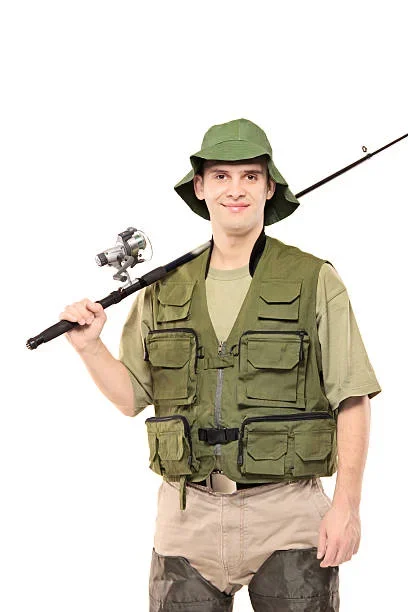
🎒 Why Use a Fly Fishing Vest?
- Quick gear access: Flies, tippets, floatant, nippers, and more, all within reach
- Balanced load: Distributes weight evenly across shoulders and back
- Custom organization: Multiple pockets and tool loops keep your system tailored
- Durable in all conditions: Built with breathable, weather-resistant fabrics
According to Fly Fisherman Magazine, over 60% of traditional stream anglers still prefer vests for their unmatched organization and reliability.
🔍 What to Look For in a Fly Fishing Vest
Feature | Why It Matters |
15+ Pockets | Keeps gear compartmentalized and accessible |
D-ring or net loop | For attaching your fly fishing net |
Mesh ventilation | Helps regulate body temperature while wading |
Adjustable straps | Allows a snug fit over waders or jackets |
Padded shoulders | Increases comfort during long days |
💡 Popular Fly Fishing Vests
Brand | Model | Highlight Feature |
Simms | Guide Vest | 24 pockets, breathable, rugged build |
Orvis | Pro Vest | Lightweight with stretch panels |
Patagonia | Mesh Master II | Ultra-light, great in warm weather |
Some anglers now prefer chest packs (see Fly Fishing Chest Pack) for a sleeker, modern approach.
👒 Fly Fishing Hat
A reliable fly fishing hat isn’t just about style; it’s a vital piece of protective gear that shields you from sun, rain, and glare while helping you stay focused on the water. Whether you’re wading under a scorching sun or casting through a drizzle, the right hat enhances both comfort and performance.
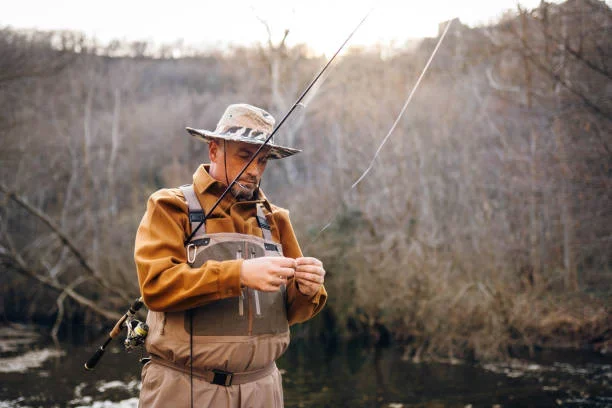
☀️ Why a Good Fly Fishing Hat Matters
- UV Protection: Reduces risk of sunburn and long-term skin damage
- Glare Reduction: Improves visibility and spotting fish
- Sweat Control: Keeps perspiration off your face and eyes
- Insect Defense: Wide brims help block gnats, mosquitoes, and flies
According to the Skin Cancer Foundation, anglers are among the top groups exposed to excessive UV rays, making proper headwear a non-negotiable.
🧢 Types of Fly Fishing Hats
Hat Type | Best For | Key Benefits |
Wide-Brim Hat | Full sun coverage | Shields face, ears, and neck |
Ball Cap with Buff | Adjustable protection | Pair with a neck gaiter or hood |
Sun Hoodie with Visor | High-activity fishing | Lightweight, breathable, all-around UV protection |
Packable Boonie | Travel and hiking anglers | Crushable, quick-dry, wide protection |
🧰 Features to Look For
- UPF 50+ rating: Blocks 98%+ of harmful UV rays
- Moisture-wicking headband: Keeps sweat at bay
- Dark underbrim: Cuts water glare for better sight-fishing
- Ventilation panels: Crucial in hot or humid conditions
- Built-in fly patch or loops: Bonus for holding dries and nymphs on the go
🏆 Recommended Fly Fishing Hats
- Columbia Bora Bora Booney – Breathable, packable, UPF 50+
- Simms Solar Sombrero – Lightweight with water-shedding fabric
- Buff Pack Run Cap – Great combo of sun-blocking and sweat control
- Sunday Afternoons Ultra Adventure Hat – Extra neck coverage with a stylish brim
🥾 Fly Fishing Boots
Fly fishing boots are essential for navigating slick rocks, muddy riverbanks, and uneven terrain. Unlike standard hiking boots, these are specially designed for traction in water, support during wading, and durability against abrasion and moisture.
Wearing the right pair means the difference between confidently stalking fish and slipping your way back to shore.
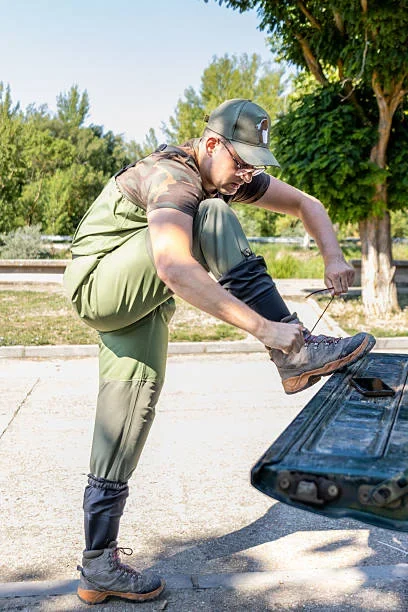
⚙️ Why You Need Dedicated Fly Fishing Boots
- Enhanced grip on wet, mossy surfaces
- Ankle and arch support for long walks or hikes to fishing spots
- Compatibility with waders for seamless integration and insulation
- Drainage systems to reduce water retention and weight
According to Trout Unlimited, poor footwear is among the top causes of injuries on fishing trips. A solid pair of boots is as important as your rod.
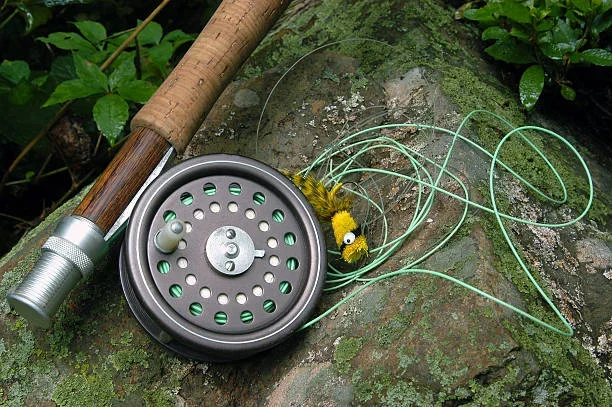
Final Thoughts: Why Fly Fishing Is Worth Trying
Fly fishing blends technique, nature, and adventure in one unforgettable experience. You’ll be equipped to explore serene waters and create memorable moments with the right gear, from your fly fishing rod to your fly fishing boots.
FAQ
Fly fishing is ideal for targeting species like trout and is more interactive and technique-driven than traditional bait fishing.
Yes! Saltwater fly fishing targets species like redfish and bonefish. Use 9-14 wt rods and corrosion-resistant reels.
Early mornings and late afternoons are ideal, especially during insect hatches.











